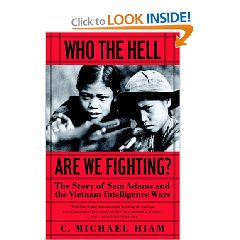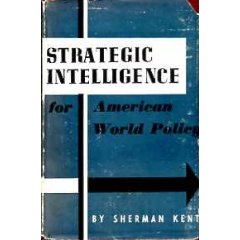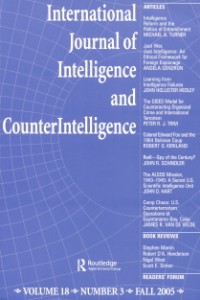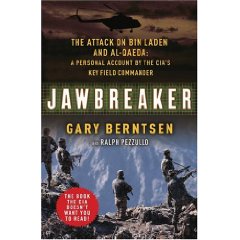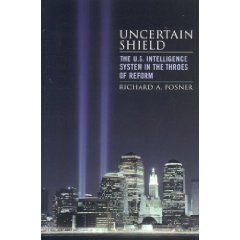
Insider at Heart, Useful Critiques, Not the Whole Picture,
My reaction as I went through the foot-notes was that this was a bunch of old guys, many associated with the Hoover Institute or themselves failed insiders, talking to one another. There are however, sufficient side notes in the book to have been worthwhile, even though much of what the author discusses is “old hat” for those of us that have spent the last eighteen years being critical of the U.S. Intelligence Community.
The following points made it to my fly-leaf review:
1) Provides very strong critique of the WMD Commission as “critical overkill.” I would add to that that the WMD Commission displayed a conflict of interest in suggesting that CIA could handle open source collection and analysis after decades of abusive irrational prejudice against open sources.
2) The author is completely off track when he says early on that Congress is not to be blamed for intelligence failures. Perhaps he is unaware of the fact that the Boren-McCurdy National Security Act of 1992 was undermined by then Secretary of Defense Cheney, but totally derailed by Senator John Warner of Virginia, who first sidelined reform to the Aspin-Brown Commission, then opposed all the recommendations, encouraged several DCI's in succession to do the same, and continues to this day to demand that the Pentagon control 85% of the NATIONAL intelligence budget because both the Pentagon and the bulk of those agencies are in VIRGINIA.
3) He provides a short discussion of how the IC elements use secrecy as a way of asserting “intellectual property” and this is useful. It would be even more useful if he were familiar with past public statement of Rodney McDaniel and with the full report of the Secrecy Commission under Senator Moynihan.
4) On Iraq and WMD he blames CIA without knowing what he is talking about. Charlie Allen got 30+ line crossers and at the professional level (which is to say, not including George “Slam Dunk” Tenet) it was clearly understood between Ambassador Wilson's foray to Niger, the British confessing on the side that they were plagiarizing school papers, and Charlie Allen's work (see my review of James Risen, State of War: The Secret History of the CIA and the Bush Administration) that there were no WMD in Iraq–this was a fabrication by Dick Cheney, and perhaps understandable since he and Rumsfeld provided bio-chem to Sadaam Hussein and–as the joke goes–kept the receipts.
5) He returns to his earlier (first book) focus on the need for a domestic intelligence agency, but does not appear to grasp that 50% of the dots that prevent the next 9-11 are “bottom up” dots that have no place to go and would still not have a place to go with a DC-based domestic intelligence agency. We need fifty state intelligence centers with county-level collection networks including 119 and 114 numbers for citizen reporting to a sense-making LOCAL center that is tied in to a NATIONAL picture.
6) The chapter on “Automated Woes” is quite interesting, and like Chapter 4 in his earlier book, is one of the best parts of this one. He demonstrates a superior understanding of the many reasons why government is happy to continue with 1970's technology. He focuses on the value of Commercial Off the Shelf (COTS) technology but does not appear, at least to where I could see it, to appreciate the value of open source software as a means of making a national intelligence network, with commercial levels of security, available to all 20,000 police forces, none of which can afford the brand of “secure” nonsense that the federal agencies are telling the states they need in order to receive the precious jewels of useless intelligence from “on high.”
7) Although he absolves Congress of blame in intelligence failure, he provides a truly excellent discussion of the limitations of Congressional oversight, as well as the pathologies of Congressional oversight, and offers some suggestions for remediation.
8) The book concludes with a discussion of the “intelligence dilemma” to wit that success demands sharing but sharing threatens secrecy. Like most insiders, he completely misses the point of the OSINT revolution: sharing is optimized by focusing on open source intelligence that can be shared with both state and local governments, and with foreign coalition and non-governmental partners.
9) Finally, he ends with comments on the need for metrics, concluding that this is in the too hard box, but that is simply because he is unfamiliar with the path-finding work of Marty Hurwitz in the 19990's, or the work of Thomas J. Berholtz (see my review of his Information Proficiency: Your Key to the Information Age (Industrial Engineering) The fact is that intelligence can be evaluated based on its outcomes in relation to investments of time, money, risk, and credibility.
See my lists on intelligence (short and long) for a wider range of readings more likely to result in long-term intelligence reform. Judge Posner certainly merits our respect and attention, but his views are rather narrowly formed.



